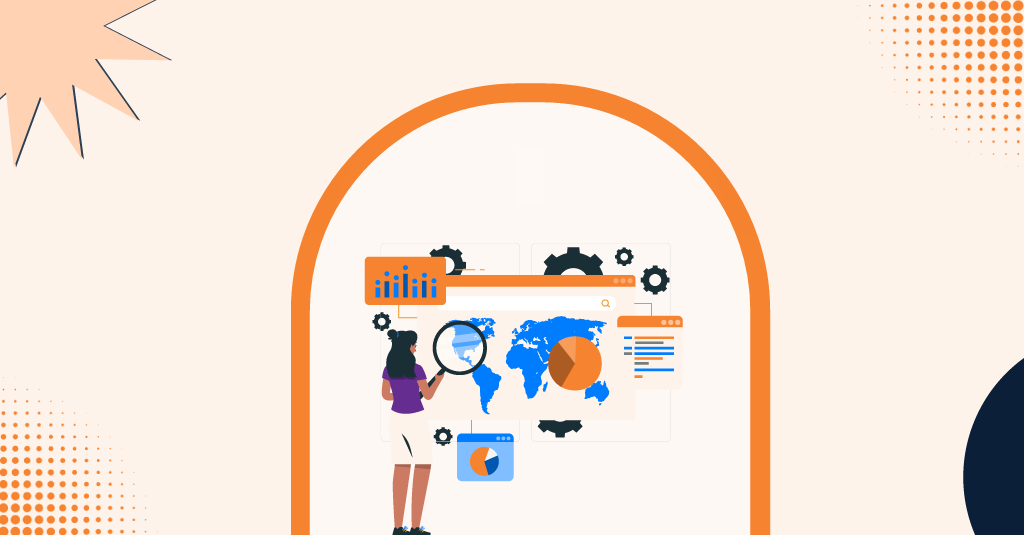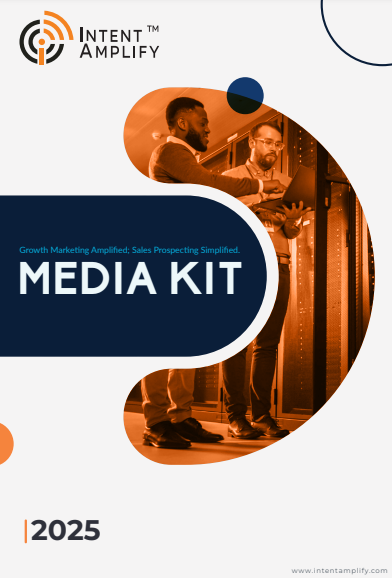
From Predictive to Prescriptive: The Next Evolution of Intent Data
- Last updated on: July 9, 2025
Let’s get real in today’s constantly changing sales and marketing environment, data is no longer the king. It’s the whole royal court. And one type of data that’s creating waves of late is intent data.
We’ve spent ten years refining the art of anticipating what the next action will be for a buyer. But here’s the thing: prediction is no longer sufficient. Think of your GPS giving you notice of traffic up ahead, but not offering an alternate route. Frustrating, isn’t it?
That’s where prescriptive intent data enters the picture not just showing you what can happen, but telling you what you should do about it. And for today’s working professionals with deadlines to meet, client calls to answer, and the occasional forgotten coffee, that’s a godsend.
So, what is fueling this shift from predictive to prescriptive intent data? And more importantly, what does it mean for how businesses interact with their buyers? Let’s dive in.
Intent Data 101: A Quick Primer
And before we jump ahead into the future, a brief recap.
Intent data follows online behavior that indicates a user is interested in something, be it a product, a service, or a subject. It could be anything from researching cybersecurity software to downloading a whitepaper for an AI-based CRM tool.
It contains two dominant flavors:
First-Party Intent Data: Collected From Your Site Directly
Third-party intent data: Derived from external sources like publisher websites, review websites, and webinars.
Predictive intent data uses this information to predict what will happen. It can, for example, label a company that has been visiting a number of cloud security blogs as a “likely buyer” in the next quarter.
Prescriptive intent information takes it one step further, however, with precisely how your team must respond to those findings.
From Predicting to Prescribing: Why Now?
Why is prescriptive intent data in the news today? Three reasons are clear:
Information overload
B2B buyers today discover 70-80% by themselves before ever speaking with a supplier, according to Gartner’s B2B buying report. Lots of digital crumbs to follow. And marketers need tools that not only track those crumbs but tell them which of them are driving real revenue.
AI and advanced analytics
The application of machine learning and AI has allowed it to sift through millions of data points, identify subtle patterns of behavior, and generate actionable recommendations in real-time.
The expectation economy
Face it, today’s shoppers call for hyper-personalized, real-time experiences. They don’t require a generic follow-up email a few days after they’ve arrived on your price page. They require relevant contact, now, and on the right medium. Prescriptive intent data makes that possible.
Real-World Example: Prescriptive in Action
Assume that. A mid-sized IT services company notices via its intent data platform that a Fortune 1000 company is looking for “cloud infrastructure optimization” in multiple technology forums and downloaded three related case studies from its rivals.
A forecasting tool might label this account “high intent.”
But a prescriptive system would do even better:
It would be recommended that we send off a customized LinkedIn InMail from your Cloud Practice Head within the next 24 hours.
Could involve giving a 30-minute demonstration of cloud cost analysis based on comparable successful transactions.
It could flag the procurement team’s head on your CRM to prioritize in upcoming outreach sequences.
That’s the distinction between knowledge and action.
Major Benefits of Prescriptive Intent Data
Why should busy professionals and tech marketers care? Because prescriptive insights give:
- Shorter deal cycles: You’ll reach prospects while they’re actively searching, not weeks from now.
- Better resource allocation: Focus your sales and marketing efforts on accounts that truly matter now.
- More personalization: Personalize messaging not only on what they’ve seen, but on what you should show them next.
- Improved customer experience: Customers are given timely, appropriate contact that is not spam but helpful.
And in today’s hypercompetitive environment, that’s pure gold.
How Prescriptive Intent Data Works
In simple terms, prescriptive systems incorporate.
- Behavioral signals – What is being searched, read, clicked, and downloaded?
- Historical deal patterns – What has worked in the past?
- AI-driven recommendations – Time-based recommendations on which accounts to focus on and how to interact with them.
These insights are made accessible through integrations with CRM, sales engagement platforms, and marketing automation software, so no one needs to dig around in spreadsheets or dashboards anymore. – Forrester.
It’s like having a smart-data assistant just whispering, “Hey, call this guy now.”
The Market Is Catching On
“Intent data’s growing significance mirrors this market evolution. As per the latest MarketsandMarkets insights, the industry’s valuation is expected to leap from $2.5 billion in 2023 to $9.6 billion by 2028, progressing at a 31.2% annual growth pace.
And where is the biggest growth area? Prescriptive analytics capability within them.
Names like Intent Amplify, 6sense, Bombora, and Demandbase are already integrating AI-powered recommendation engines into their intent platforms, a strong indication that this is no fad, but the future of data-driven go-to-market strategy.
Recommended: How Predictive Analytics Finds Meeting-Ready Leads
And Then What Do You Do
Here’s a simple prescription (pun intended):
- Audit your current intent data tools.
- Are they forecasting or are they dictating?
- Invest in platforms with prescriptive capabilities built in.
- Look for AI-powered recommendations, ranked lists of leads, and action-driven alerts.
- Train your marketing and sales personnel.
Even the most advanced AI needs human deployment. Ensure teams not only comprehend but can also operationalize the suggested guidance effectively. Align KPIs with actionability. Stop measuring the success of intent data in clicks and impressions alone. Measure actionable results: booked meetings, deal velocity, and revenue effect.
Wrapping Up: Predictive Is Good. Prescriptive Is Better
Intent data isn’t new, but what we’re observing here is its highest value to date. Converting predictive insight into prescriptive action makes data a moving force, a working part of your marketing and sales strategy, rather than a passive bystander. In an economy of attention, where attention is fleeting, competition is fierce, and timing is critical, all that movement might be the difference between a lost opportunity and a deal sealed. And who would not welcome a bit of extra guidance on what to do next?
FAQs
Q1. What is the difference between predictive intent data and prescriptive intent data?
Predictive intent information predicts future action from historical behavior, but prescriptive intent information provides you with specific next steps your team needs to take based on the predictions.
Q2. Why is prescriptive intent data increasingly being accepted?
The evolution of AI, amplified buyer research habits, and the requirement for hyper-personalized experiences are driving the transition towards prescriptive insights in marketing and sales.
Q3. Is prescriptive intent data accessible and practical for small businesses, too?
Yes. Some intent data solutions now offer scalable, AI-driven prescriptive capabilities that are applicable to SMBs and not just the enterprise players.
Q4. List some top platforms providing prescriptive intent data features?
Some of the leading players include 6sense, Bombora, Demandbase, and TechTarget, among others, which all have AI recommendation features in their solutions.
Q5. How does prescriptive intent data enhance ROI?
By focusing resources on high-intent accounts and delivering timely, relevant engagement, businesses can minimize wasted effort and close deals more quickly, directly increasing marketing and sales ROI.





